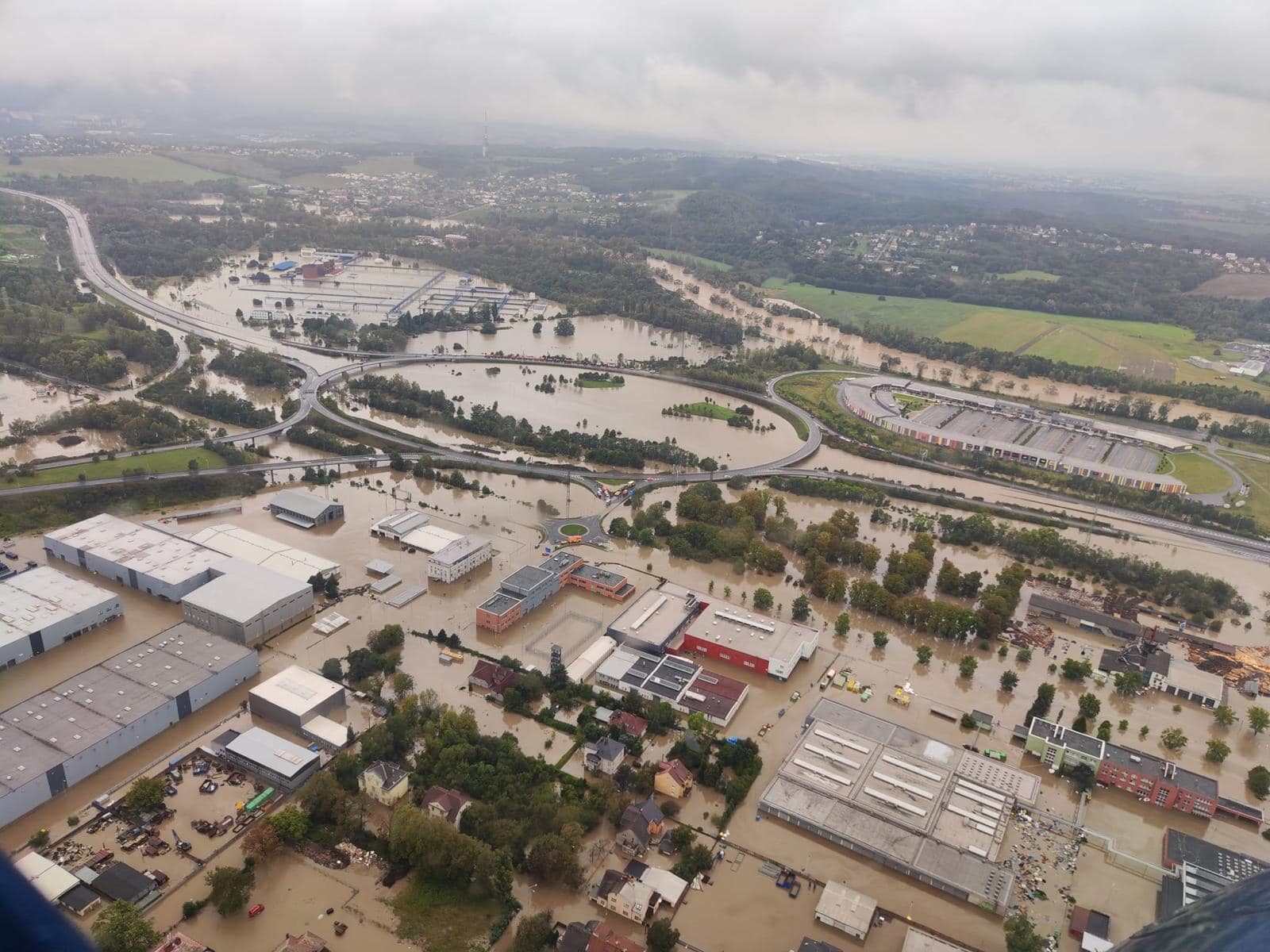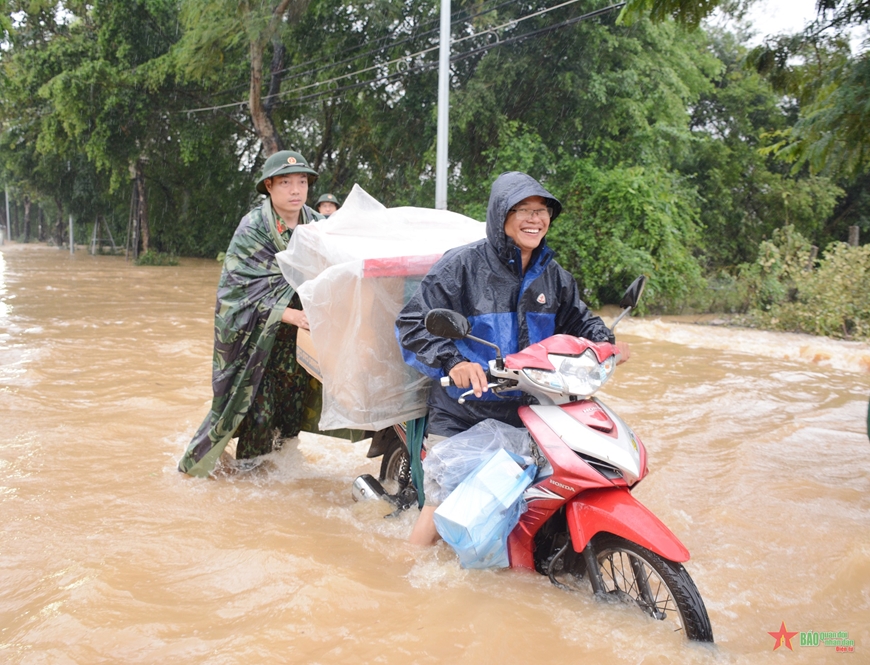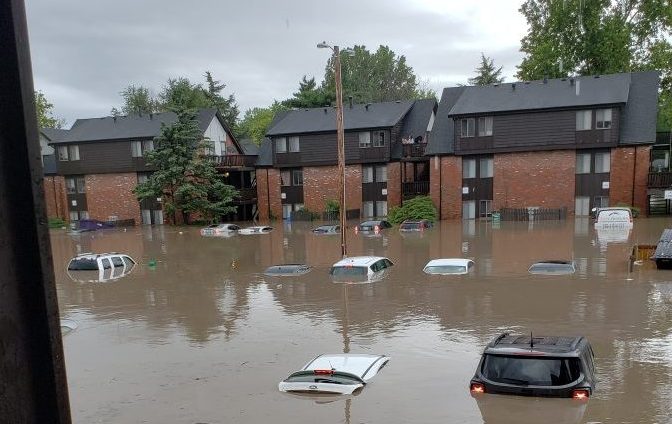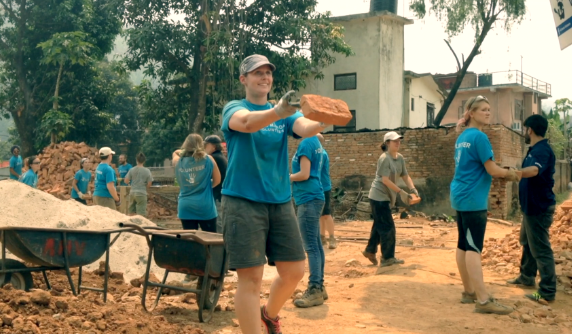

Asia’s biggest typhoon of 2024 hit multiple countries in Southeast Asia in early September, leaving dozens dead or missing.
While Typhoon Yagi (known as Enteng in the Philippines) affected several countries, including China, the Philippines, Laos, Thailand and Myanmar, the most significant impacts were in Vietnam.
Yagi was the strongest storm to strike Vietnam in 70 years, causing severe flooding and landslides.
Key facts
- Almost 600 people were killed across Vietnam (300 deaths), Myanmar (226 deaths), Laos (4 deaths), Thailand (42 deaths) and the Philippines (21 deaths). Most of the deaths are due to landslides and flash floods. There are still people missing who are presumed dead.
- Nearly one-third (45) of the casualties were in Lao Cai Province. The biggest landslide of the event consumed the small hamlet of Lang Nu in Lao Cai province (population 158) on Sept. 10. Triggered by heavy rains, it left at least 48 dead, 39 people missing and presumed dead, and 17 injured. Less than half the residents survived. Lang Nu was home to the Tay ethnic minority. Community groups and charitable organizations nationwide provided necessary support to the residents.
- Infrastructure was badly affected, especially transportation and communications. A bridge in Phu Tho province collapsed on Sept. 9, killing several people. Additionally, there was a loss of access to safe drinking water and sanitation.
- Thousands of homes were damaged or destroyed, including 237,000 in Vietnam, more than 50,000 in China, 12,000 in the Philippines and 8,000 homes in Thailand.
- Total economic losses are anticipated to be more than $16 billion.
(Photo: Flooding from Super Typhoon Yagi in Vietnam. Credit: Thông tin Chính phủ (Government of Vietnam) via Facebook)
Latest Updates

What we’re watching: Weekly disaster update, September 16
Vietnam
Yagi made landfall on Sept. 7 in Northern Vietnam in the coastal cities of Haiphong and Quang Ninh, about 75 miles east of the country’s capital, Hanoi. At landfall, winds reached 90 mph, making it the strongest storm to hit the country in 30 years. Analysts say it could lead to an increased focus on climate change.
Vietnam’s National Centre for Hydro-Meteorological Forecasting said there had been 8.2 to 17 inches of rain in the first 24 hours in some areas. Hanoi and its suburbs, as well as many other communities along the Red River, flooded. Low-lying areas were evacuated as water exceeded three feet.
While the military and community organizations engaged in response and recovery efforts, insurance in Vietnam is rare, meaning recovery will be expensive and require many government and philanthropic resources.
Yagi was the 11th named storm, the first violent typhoon and the strongest storm of the 2024 Pacific typhoon season.
Impact in other countries
China
- Yagi made two landfalls in China on Sept. 6. The first landfall was on Hainan Island in southern China as a Category 4 storm, the second strongest this year after Hurricane Beryl. The last big typhoon to hit the island was Rammasun in 2014.
- Hainan Province is nicknamed “the Hawaii of China” because of its tropical beauty, sandy beaches, and cultural and entertainment attractions. There was significant damage on the island, which will impact tourism and livelihoods.
- At least one million people were evacuated in China, including 400,000 from the island.
- The second landfall was on Sept. 7 in the southwestern end of Guangdong province.
- More than 1.2 million people were affected in Hainan, Guangdong and Guangxi provinces.
Laos
- France 24 reported that the World Food Programme had expressed concerns “for the safety of communities in northern Laos” and that national media had reported “extensive damage to houses, roads, markets, schools and farmland.”
Myanmar
- Myanmar is under the rule of a military junta. At least 3.4 million people were already facing displacement in the country when the typhoon hit. The rains displaced at least 200,000 more people at a time when there are not enough supports available. In a rare appeal, the junta asked for international assistance.
The Philippines
- Yagi was known as Severe Tropical Storm Enteng in the Philippines. It entered the Philippines Area of Responsibility (PAR) in late August, making landfall on the island of Luzon on Sept. 2 and exiting the PAR on Sept. 4.
- Luzon recorded 15.8 inches of rain during the storm, but the area has continued to receive rain from the outer bands.
- Nearly three million people (almost 800,000 families) were affected across 2,821 barangays. Heavy rain led to flooding and landslides, displacing almost 50,000 people from their homes.
- At least 21 people died.
Thailand
- There were 9,000 flood-affected families in Thailand.
- At least 42 people died across the country.
Livelihood and supply chain issues
In the wake of Yagi, there were far-reaching closures and disruptions, especially in the manufacturing and shipping sectors, affecting China, Hong Kong, and Vietnam.
Vietnam’s industrial region, Haiphong, is home to several international factories, including LG Electronics.
Bloomberg noted that in Guangdong, one of the provinces affected in China, known as a manufacturing hub, “climate change [was] a factor in the country’s latest factory activity data, which fell below expectation.” This was attributed in part to their heavy flood season in 2024.
As noted, Hainan is a heavy tourist destination, so the damage will reduce tourism until repairs can be made. While it isn’t high tourism season now, the damage was extensive.
Rapid intensification and climate change
As with Hurricane Beryl earlier this year, Yagi went under rapid intensification as it moved between the Philippines and China. It strengthened by 70 mph and had winds of 160 mph on Sept. 5. When it hit China, Yagi was a Super Typhoon but lost intensity before it reached Vietnam and was downgraded to a typhoon.
According to BBC, “scientists have warned that as the world warms, typhoons can bring higher wind speeds and more intense rainfall, although the influence of climate change on individual storms is complicated.”
Warmer ocean temperatures cause tropical cyclones to intensify quickly. Scientists have linked this to the “human-caused climate crisis.”
A study published in July, found that climate change is causing typhoons to stay over land longer, intensify faster and form closer to the coast. Several events in 2024, including flooding in Kenya and Hurricane Beryl, were affected by the heat of their respective oceans.
Red River Valley
The Red River Valley area is one of the most densely populated in Southeast Asia. The river begins in China and flows southeast through Hanoi and out to the Gulf of Tonkin.
Flooding is not unusual, and people have tried to manage and control the river for thousands of years. The extreme speed of increase seen during Yagi is unusual, and the river reached its highest levels in 20 years. At one point on Sept. 10, water was rising by four inches every hour. The rain continued, even as the storm moved on and weakened.
China and Vietnam are working together on flood control.

CDP has a Global Recovery Fund that provides an opportunity for funders to meet the ongoing and ever-expanding challenges presented by global crises.
Contact CDP
Philanthropic contributions
If you have questions about donating to the CDP Global Recovery Fund, need help with your disaster-giving strategy or want to share how you’re responding to this disaster, please contact development.
(Photo: Coalition troops relocate people and property in affected areas in Long Bien (Hanoi) to safety. Credit: Thông tin Chính phủ (Government of Vietnam) via Facebook)
Recovery updates
If you are a responding NGO, please send updates on how you are working on recovery from this disaster to Tanya Gulliver-Garcia.
We welcome the republication of our content. Please credit the Center for Disaster Philanthropy.
More Ways to Help
- Provide cash assistance: As with most disasters, disaster experts recommend cash support, which enables on-the-ground agencies to direct funds to the greatest area of need, support economic recovery and ensure donation management does not detract from disaster recovery needs. Many people lost everything in the typhoon. Direct cash assistance allows families to purchase items and services locally that address their multiple needs. It gives each family flexibility and choice, ensuring that support is relevant and timely. Cash assistance can also help move families faster toward rebuilding their lives.
- Ask the experts: If you are considering supporting an organization that is positioned to work in an affected area, do some research. CDP and InterAction can provide resources and guidance about organizations working in affected communities. The Council on Foundations provides Country Notes for countries to help foundations understand giving requirements, laws and regulations in various countries.
Resources

Floods
Flooding is our nation’s most common natural disaster. Regardless of whether a lake, river or ocean is actually in view, everyone is at some risk of flooding. Flash floods, tropical storms, increased urbanization and the failing of infrastructure such as dams and levees all play a part — and cause millions (sometimes billions) of dollars in damage across the U.S. each year.

Disaster Phases
Disasters affect millions of people and cause billions of dollars in damage globally each year. To help understand and manage disasters, practitioners, academics and government agencies frame disasters in phases.

Resilience
The Latin root of “resilience” means to bounce back, but every field has its own definition and most individuals within each discipline will define it differently. Learn more.